A Real-Time Implementation of Novel and Stable Variable Step Size MPPT
Abstract
:1. Introduction
2. Methodology
2.1. Modeling of the Photovoltaic Panel
- -
- A current power supply (Iph) that depends of the absorbed irradiation;
- -
- A diode in which the (Id) current flows;
- -
- -
- The voltage region, where the VOC can be depicted;
- -
- The current region, where the ISC can be depicted;
- -
- The maximum power region, where the MPP can be depicted.
2.2. Boost Converter
2.3. Modeling of the Photovoltaic Panel
2.3.1. P&O Algorithm
2.3.2. P&O Algorithm Using a Variable Step Size
3. Result
3.1. Simulation Result
3.2. Experimental Setup
4. Conclusions
Author Contributions
Funding
Acknowledgments
Conflicts of Interest
Nomenclature
| G | Global irradiation (W/m2) | Gref | Reference irradiation (W/m2) |
| Ip | Cell current (A) | Vp | Cell voltage (v) |
| Rp | parallel resistance (Ω) | Rs | Series resistance (Ω) |
| n | Ideal factor | Eg | Band gap energy (ev) |
| Tc | Cell junction temperature (°C) | Tc_ref | Cell reference temperature (°C) |
| β | Boltzmann constant (1.38 × 10−23) | D | Duty cycle |
| Ns | Number of series modules | Np | Number of parallel modules |
| ns | Number of series cells | KSCT | Short-circuit current temperature (A/°K) |
References
- Ramos, J.A.; Campayo, J.J.; Larranaga, J.; Zulueta, E.; Barambones, O.; Motrico, J.; Fernandez Gamiz, U.; Zamora, I. Two photovoltaic cell simulation models in matlab/Simulink. Int. J. Tech. Phys. Probl. Eng. 2012, 4, 45–51. [Google Scholar]
- Xu, T.; Venkatesh, B.; Opathella, C.; Singh, B.N. Artificial neural network model of photovoltaic generator for power flow analysis in PSS® SINCAL. IET Gener. Transm. Distrib. 2014, 8, 1346–1353. [Google Scholar] [CrossRef] [Green Version]
- Marinić-Kragić, I.; Nižetić, S.; Grubišić-Čabo, F.; Papadopoulos, A.M. Analysis of flow separation effect in the case of the free-standing photovoltaic panel exposed to various operating conditions. J. Clean. Prod. 2018, 174, 53–64. [Google Scholar] [CrossRef]
- Marcello, P. Induction machines sensors-less wind generator with integrated intelligent maximum power point tracking and electric losses minimization technique. IET Control Theory Appl. 2015, 9, 1831–1838. [Google Scholar]
- Zakzouk, N.E.; Abdelsalam, A.K.; Helal, A.A.; Williams, B.W. Modified variable-step incremental conductance maximum power point tracking technique for photovoltaic systems. In Proceedings of the IECON 2013—39th Annual Conference of the IEEE Industrial Electronics Society, Vienna, Austria, 10–13 November 2013; pp. 1741–1748. [Google Scholar]
- Dalala, Z.M.; Saadeh, O.; Bdour, M.; Zahid, Z.U. A New Maximum Power Point Tracking (MPPT) Algorithm for Thermoelectric Generators with Reduced Voltage Sensors Count Control. Energies 2018, 11, 1826. [Google Scholar] [CrossRef] [Green Version]
- Reisi, A.R.; Moradi, M.H.; Jamasb, S. Classification and comparison of maximum power point tracking techniques for photovoltaic system: A review. Renew. Sustain. Energy Rev. 2013, 19, 433–443. [Google Scholar] [CrossRef]
- Farhat, M.; Barambones, O.; Sbita, L. Efficiency optimization of a DSP-based standalone PV system using a stable single input fuzzy logic controller. Renew. Sustain. Energy Rev. 2015, 49, 907–920. [Google Scholar] [CrossRef]
- Jie, S.; Lee, W.J. Forecasting Power Output of Photovoltaic Systems Based on Weather Classification and Support Vector Machine. IEEE Trans. Ind. Appl. 2012, 48, 1064–1069. [Google Scholar]
- Takruri, M.; Farhat, M.; Sunil, S.; Ramos-Hernanz, J.A.; Barambones, O. Support Vector Machine for Photovoltaic System Efficiency Improvement. J. Sustain. Dev. Energy Water Environ. Syst. 2019, 8, 441–451. [Google Scholar] [CrossRef]
- Farhat, M.; Barambones, O.; Sbita, L. A new maximum power point method based on a sliding mode approach for solar energy harvesting. Appl. Energy 2017, 185, 1185–1198. [Google Scholar] [CrossRef]
- De Brito, M.A.G.; Galotto, L.; Sampaio, L.P.; Melo, G.D.A.E.; Canesin, C.A. Evaluation of the Main MT Techniques for Photovoltaic Applications. IEEE Trans. Ind. Electron. 2013, 60, 1156–1167. [Google Scholar] [CrossRef]
- Veerachary, M.; Senjyu, T.; Uezato, K. Neural-network-based maximum-power-point tracking of coupled-inductor interleaved-boost-converter-supplied pv system using fuzzy controller. IEEE Trans. Ind. Electron. 2003, 50, 749–758. [Google Scholar] [CrossRef] [Green Version]
- Sheik, S.; Devaraj, D.; Imthias, T. A novel hybrid Maximum Power Point Tracking Technique using Perturb & Observe algorithm and Learning Automata for solar PV system. Energy 2016, 112, 1096–1106. [Google Scholar]
- Piegari, L.; Rizzo, R.; Spina, I.; Tricoli, P. Optimized Adaptive Perturb and Observe Maximum Power Point Tracking Control for Photovoltaic Generation. Energies 2015, 8, 3418–3436. [Google Scholar] [CrossRef]
- Loukil, K.; Abbes, H.; Abid, H.; Abid, M.; Toumi, A. Design and implementation of reconfigurable MPPT fuzzy controller for photovoltaic systems. Ain Shams Eng. J. 2020, 11, 319–328. [Google Scholar] [CrossRef]
- Al-Odienat, A.I.; Al-Lawama, A.A. The Advantages of PID Fuzzy Controllers over The Conventional Types. Am. J. Appl. Sci. 2008, 5, 653–658. [Google Scholar] [CrossRef] [Green Version]
- Hao, L. Mode-dependent event-triggered control of networked switching Takagi–Sugeno fuzzy systems. IET Control Theory Appl. 2016, 10, 711–716. [Google Scholar]
- Tu, J.V. Advantages and Disadvantages of Using Artificial Neural Networks versus Logistic Regression for Predicting Medical Outcomes. J. Clin. Epidemiol. 1996, 49, 1225–1231. [Google Scholar] [CrossRef]
- Farhat, M.; Flah, A.; Sbita, L. Photovoltaic Maximum Power Point Tracking Based on ANN Control. Int. Rev. Model. Simul. 2014, 7, 474–480. [Google Scholar] [CrossRef]
- Mayssa, F.; Lassaad, S. ANFIS controlled solar pumping system. I-Manager’s J. Electron. Eng. 2011, 3, 1–9. [Google Scholar] [CrossRef]
- Afghoul, H.; Chikouche, D.; Krim, F.; Beddar, A. A novel implementation of MPPT sliding mode controller for PV generation systems. In Proceedings of the Eurocon 2013, Zagreb, Croatia, 1–4 July 2013. [Google Scholar]
- Fathabadi, H. Novel photovoltaic based battery charger including novel high efficiency step-up DC/DC converter and novel high accurate fast maximum power point tracking controller. Energy Convers. Manag. 2016, 110, 200–211. [Google Scholar] [CrossRef]
- Eydi, M.; Hosseini, S.H.; Ghazi, R. A New High Gain DC-DC Boost Converter with Continuous Input and Output Currents. In Proceedings of the 10th International Power Electronics, Drive Systems and Technologies Conference (PEDSTC), Shiraz, Iran, 12–14 February 2019. [Google Scholar]
- Mamur, H.; Ahiska, R. Application of a DC–DC boost converter with maximum power point tracking for low power thermoelectric generators. Energy Convers. Manag. 2015, 97, 265–272. [Google Scholar] [CrossRef]
- Padhee, S.; Pati, U.C.; Mahapatra, K. Overview of High-Step-Up DC–DC Converters for Renewable Energy Sources. J. IETE Tech. Rev. 2018, 35, 99–115. [Google Scholar] [CrossRef]
- Lin, R.; Chang, Y.; Lee, C. Optimal Design of LED Array for Single-Loop CCM Buck–Boost LED Driver. IEEE Trans. Ind. Appl. 2013, 49, 761–768. [Google Scholar] [CrossRef]
- Farhat, M.; Barambones, O.; Sbita, L. Variable Structure MPP controller for Photovoltaic Pumping System. Trans. Inst. Meas. Control 2016, 9, 1283–1292. [Google Scholar] [CrossRef]
- Lian, K.L.; Jhang, J.H.; Tian, I.S. A Maximum Power Point Tracking Method Based on Perturb-and-Observe Combined With Particle Swarm Optimization. IEEE J. Photovolt. 2014, 4, 626–633. [Google Scholar] [CrossRef]
- Femia, N.; Petrone, G.; Spagnuolo, G.; Vitelli, M. Optimization of perturb and observe maximum power point tracking method. IEEE Trans. Power Electron. 2005, 20, 963–973. [Google Scholar] [CrossRef]
- Mendez, A.; Belghith, A. A DSP for Sensing the Bladder Volume through Afferent Neural Pathways. IEEE Trans. Biomed. Circuits Syst. 2014, 8, 552–564. [Google Scholar] [CrossRef]
- Chierchie, F.; Paolini, E.E.; Stefanazzi, L.; Oliva, A.R. Simple Real-Time Digital PWM Implementation for Class-D Amplifiers with Distortion-Free Baseband. IEEE Trans. Ind. Electron. 2014, 61, 5472–5479. [Google Scholar] [CrossRef]
- Wing-Chau, N.G.; Nguyen, A.T.; Ayotte, S.; Chul Soo, P.; Rusch, L.A. Overcoming Phase Sensitivity in Real-Time Parallel DSP for Optical Coherent Communications: Optically Filtered Lasers. J. Lightwave Technol. 2014, 32, 411–420. [Google Scholar]
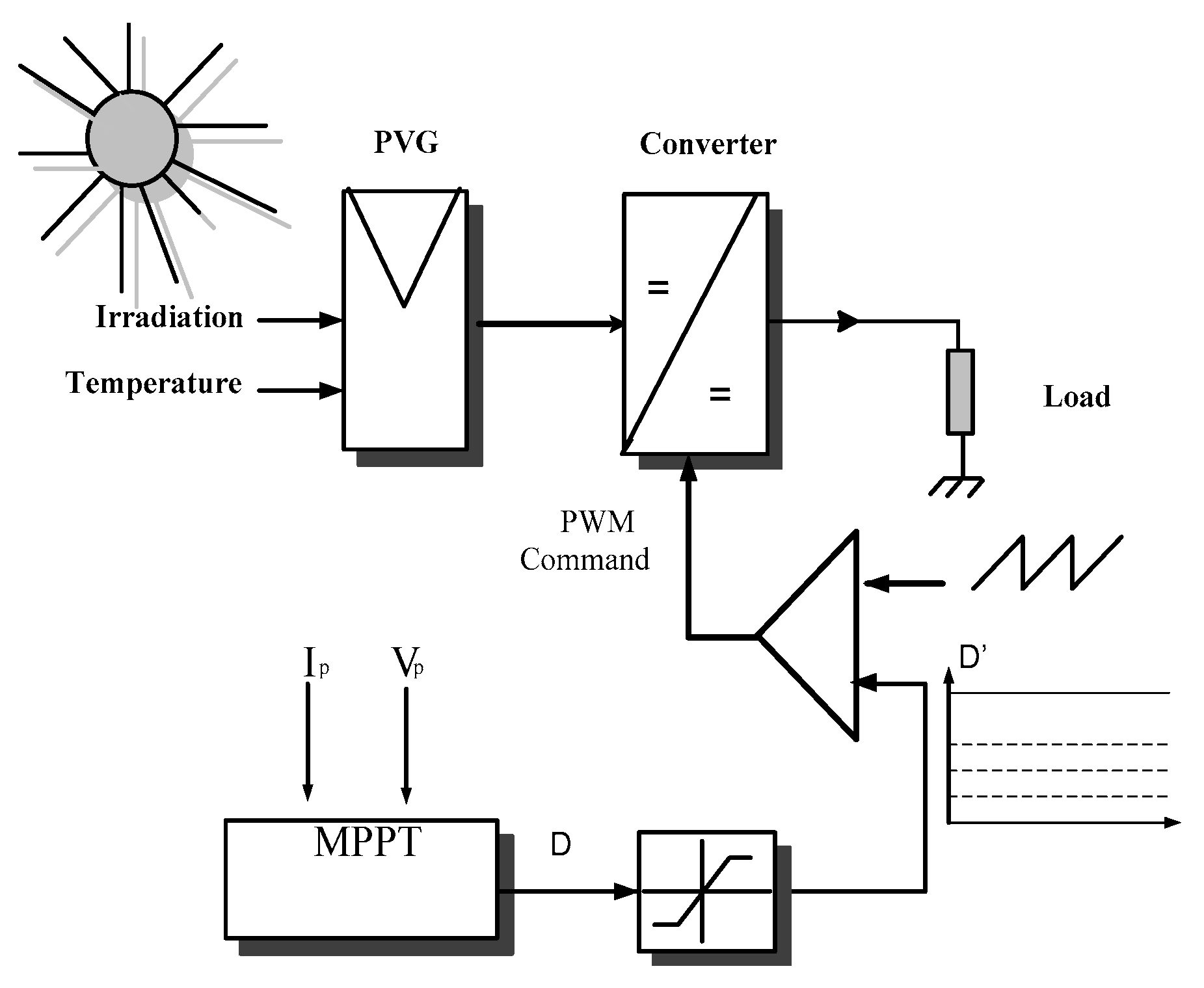
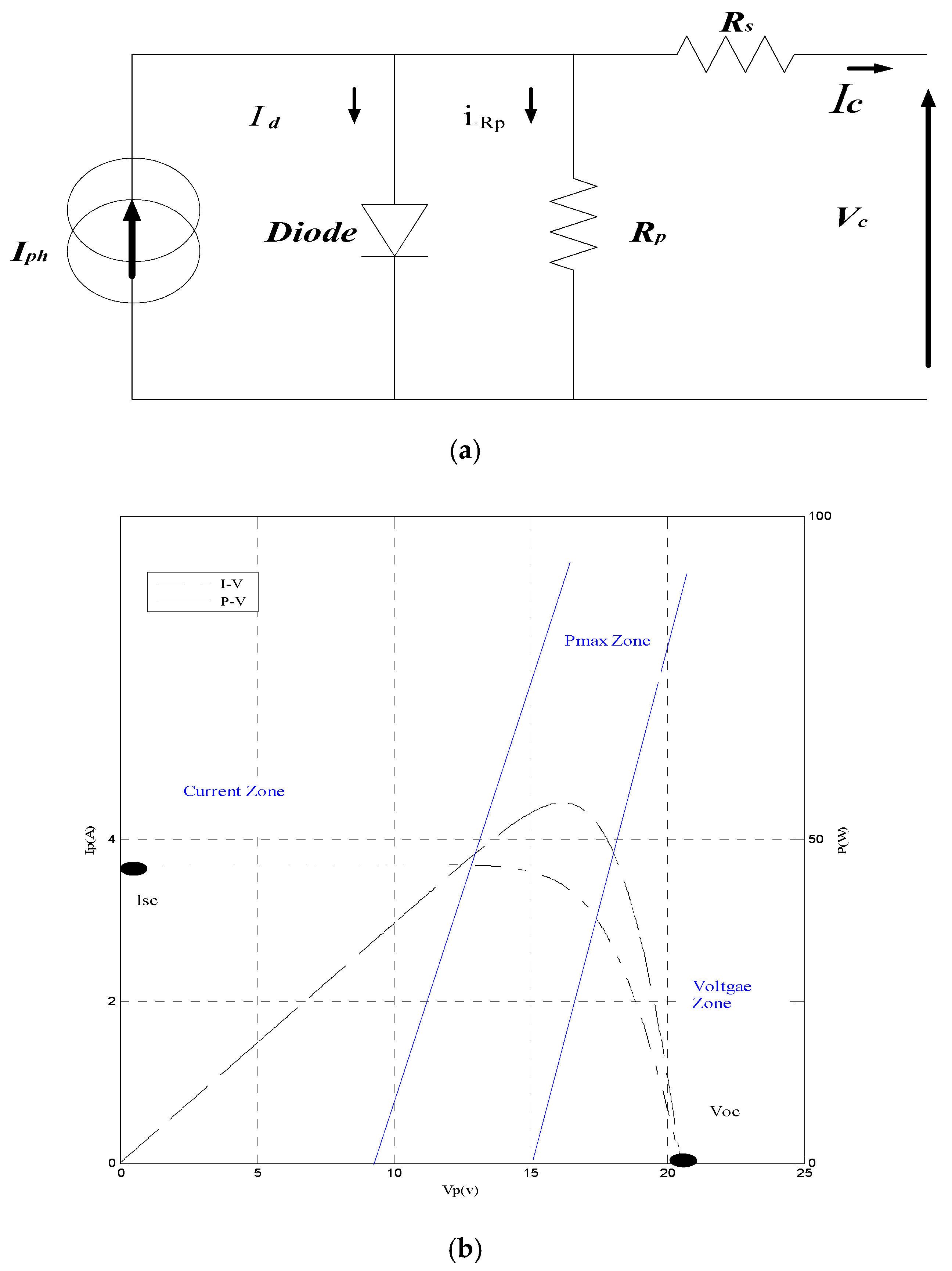

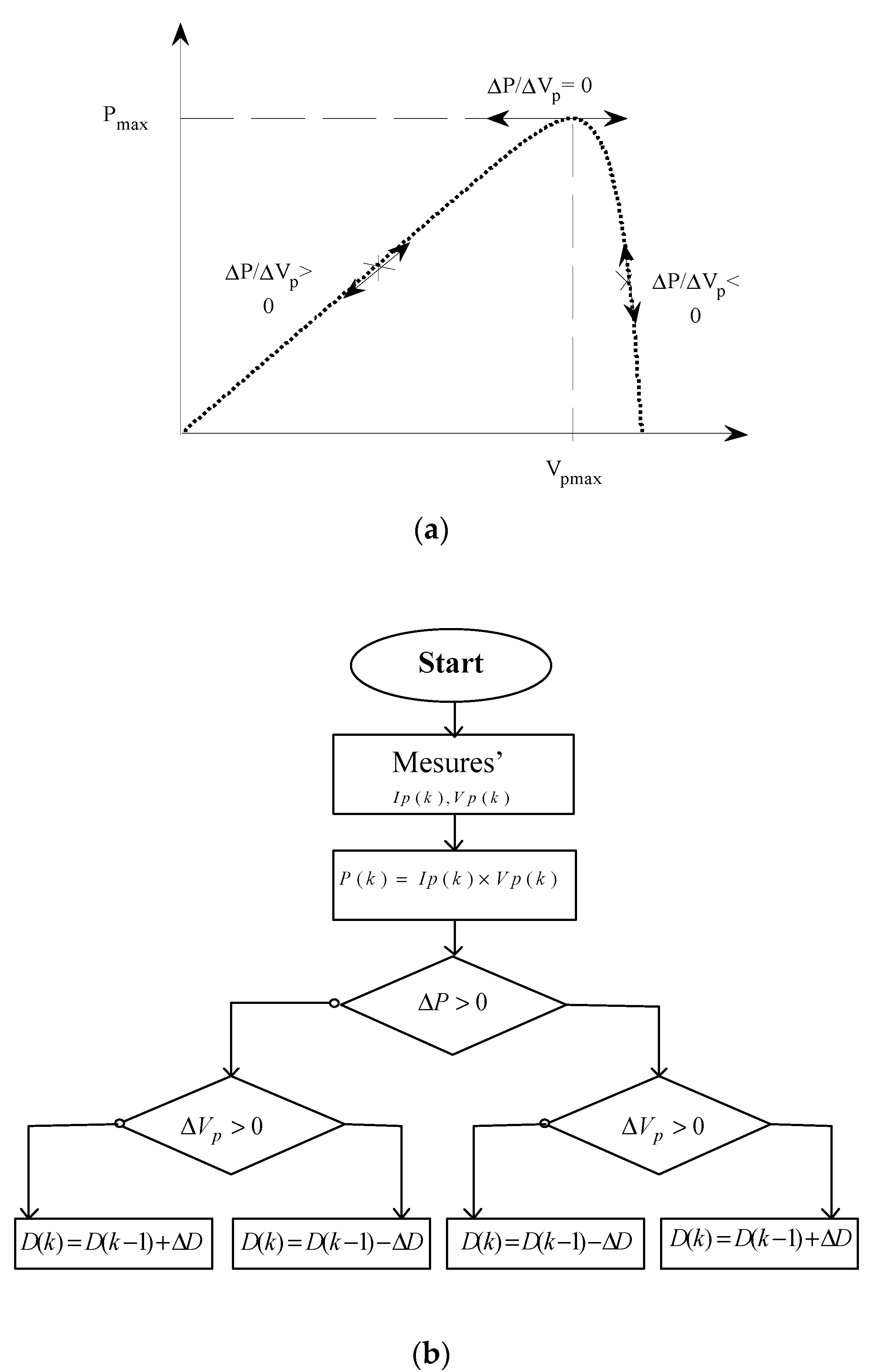
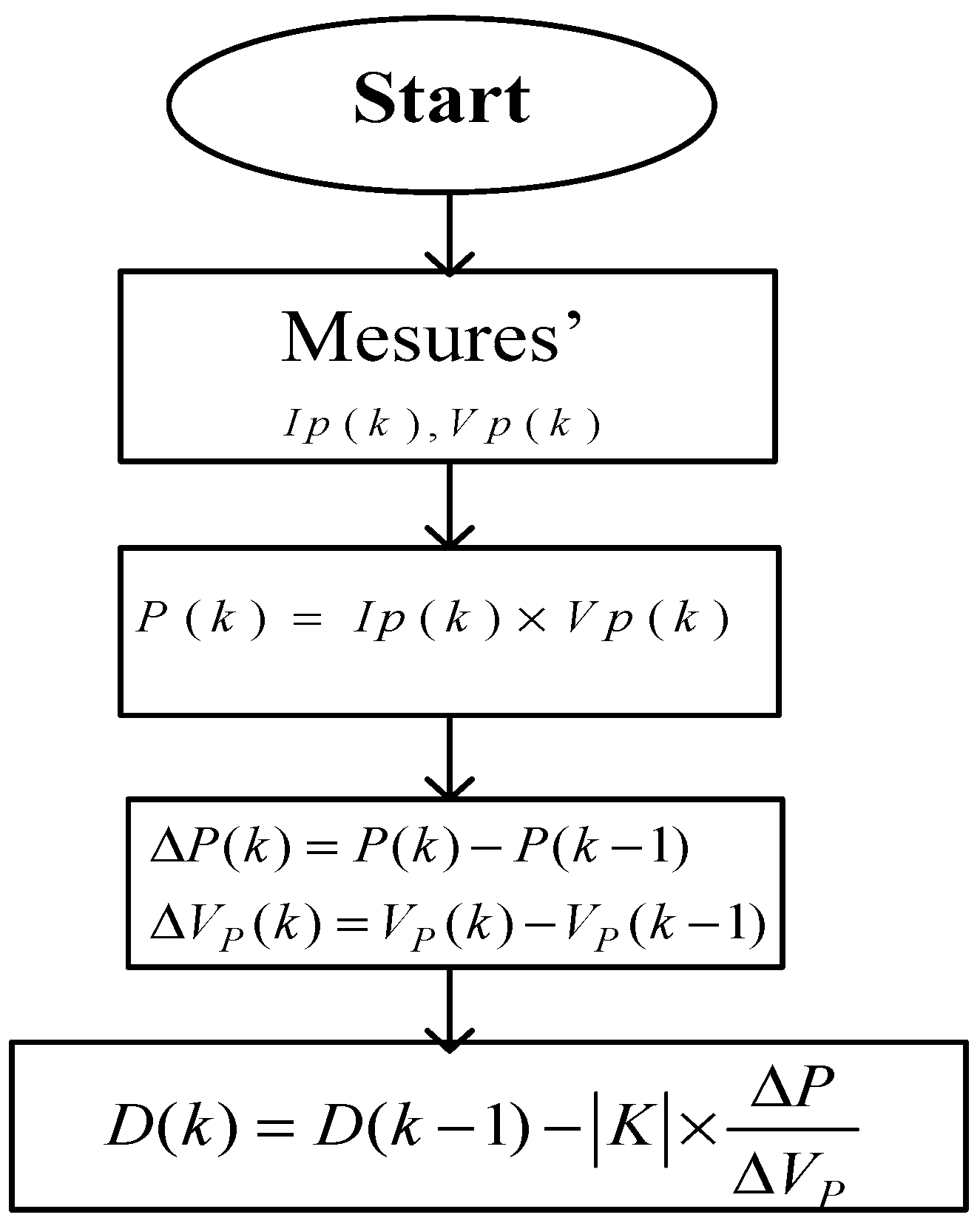
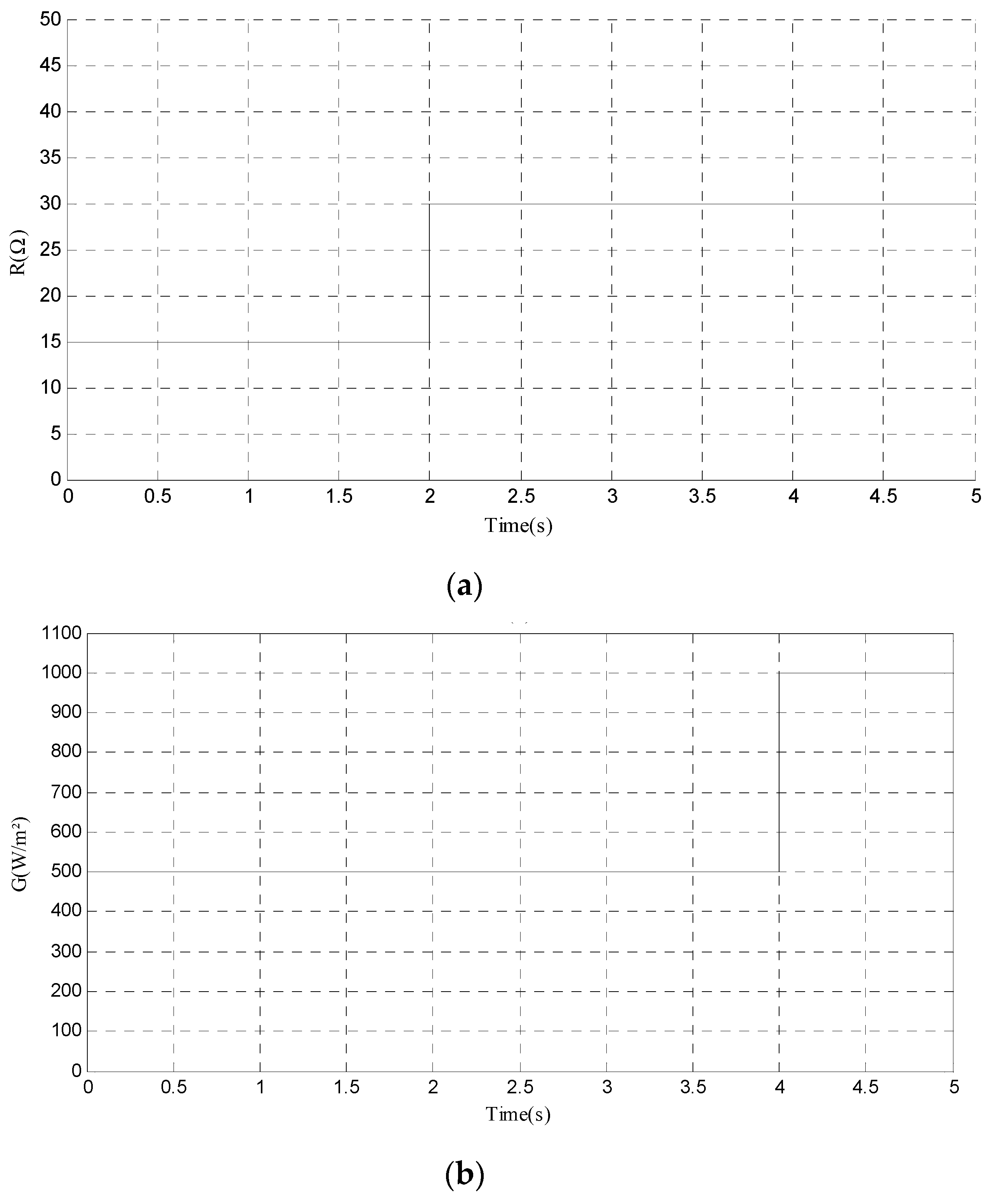
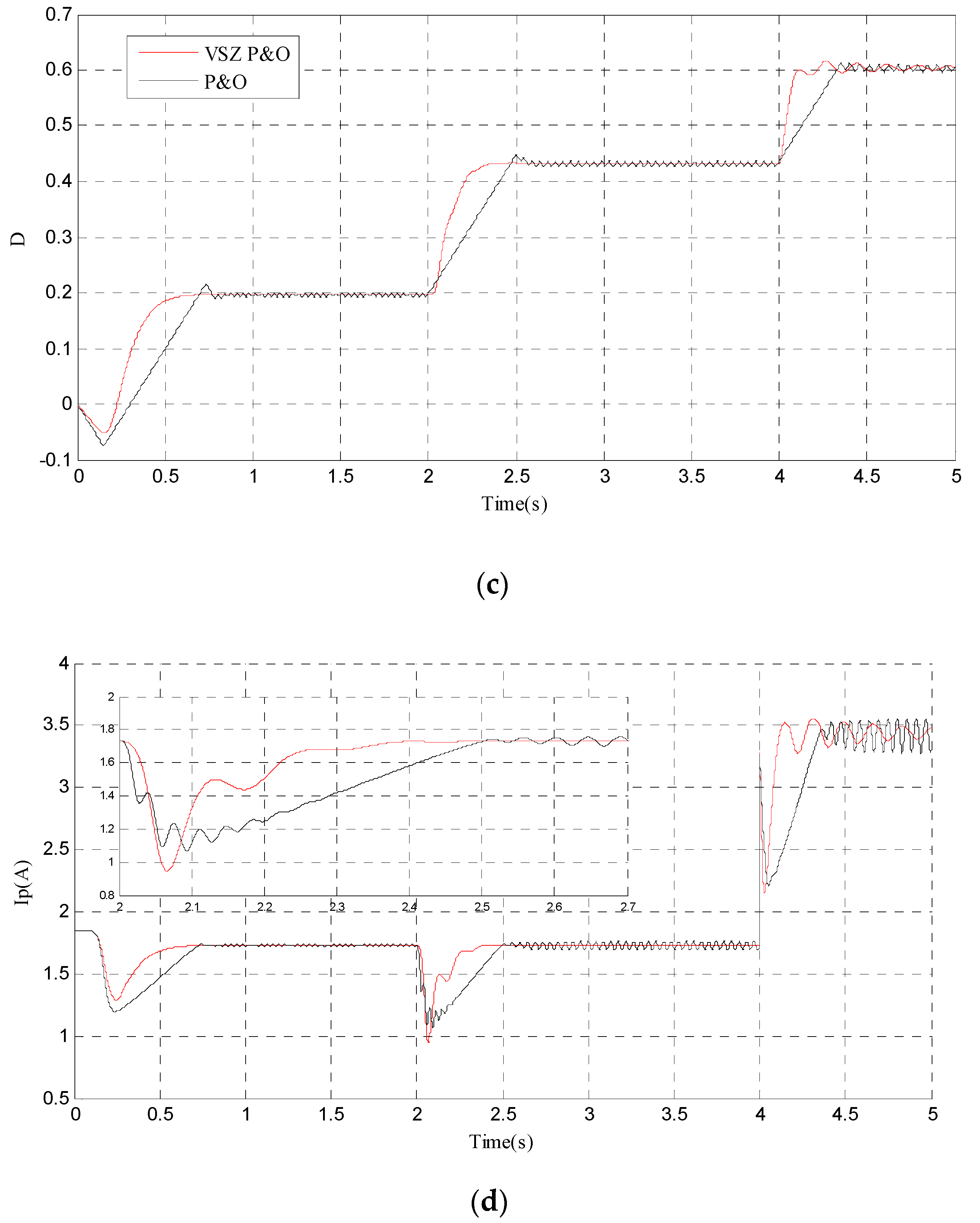
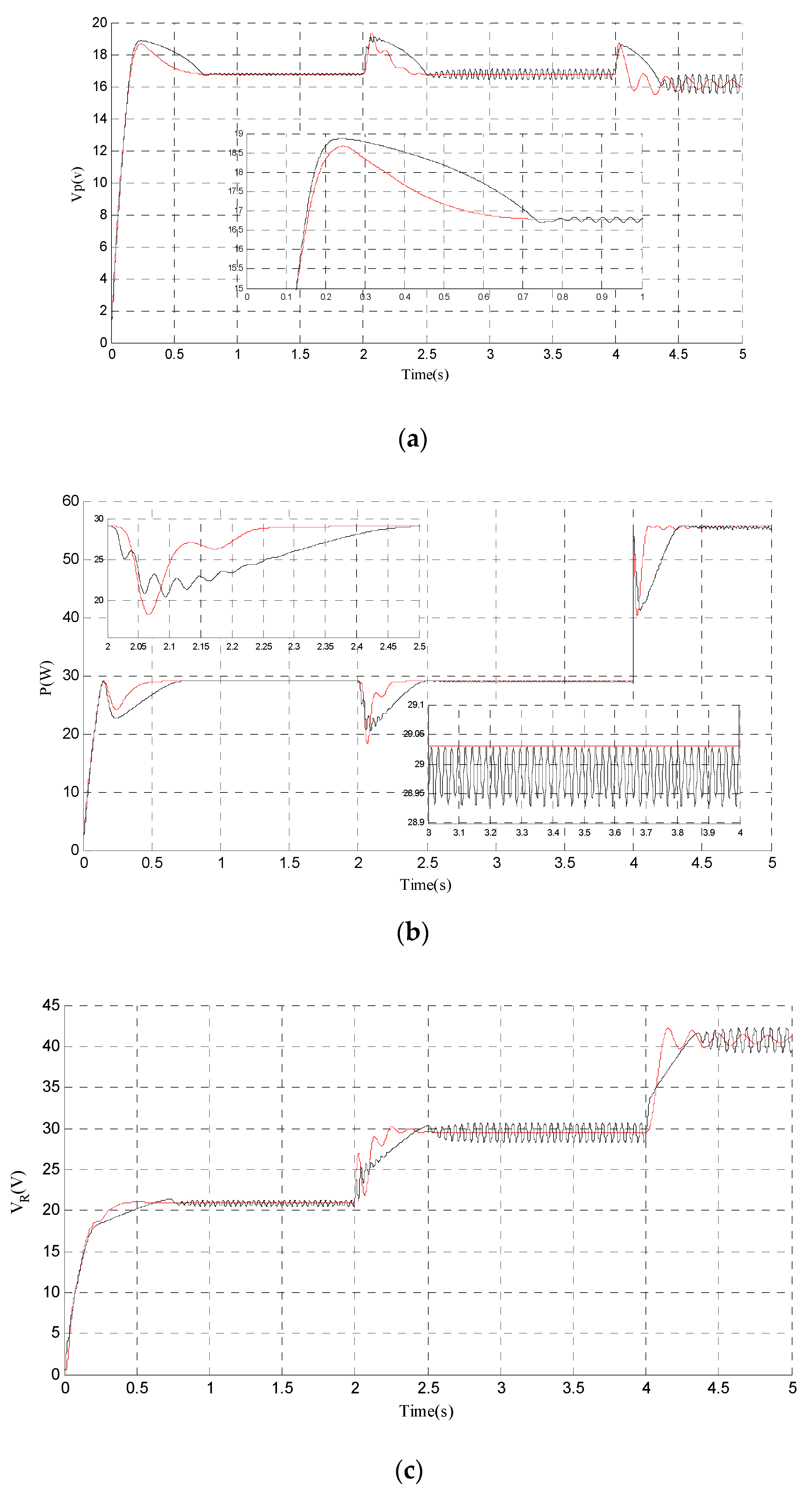
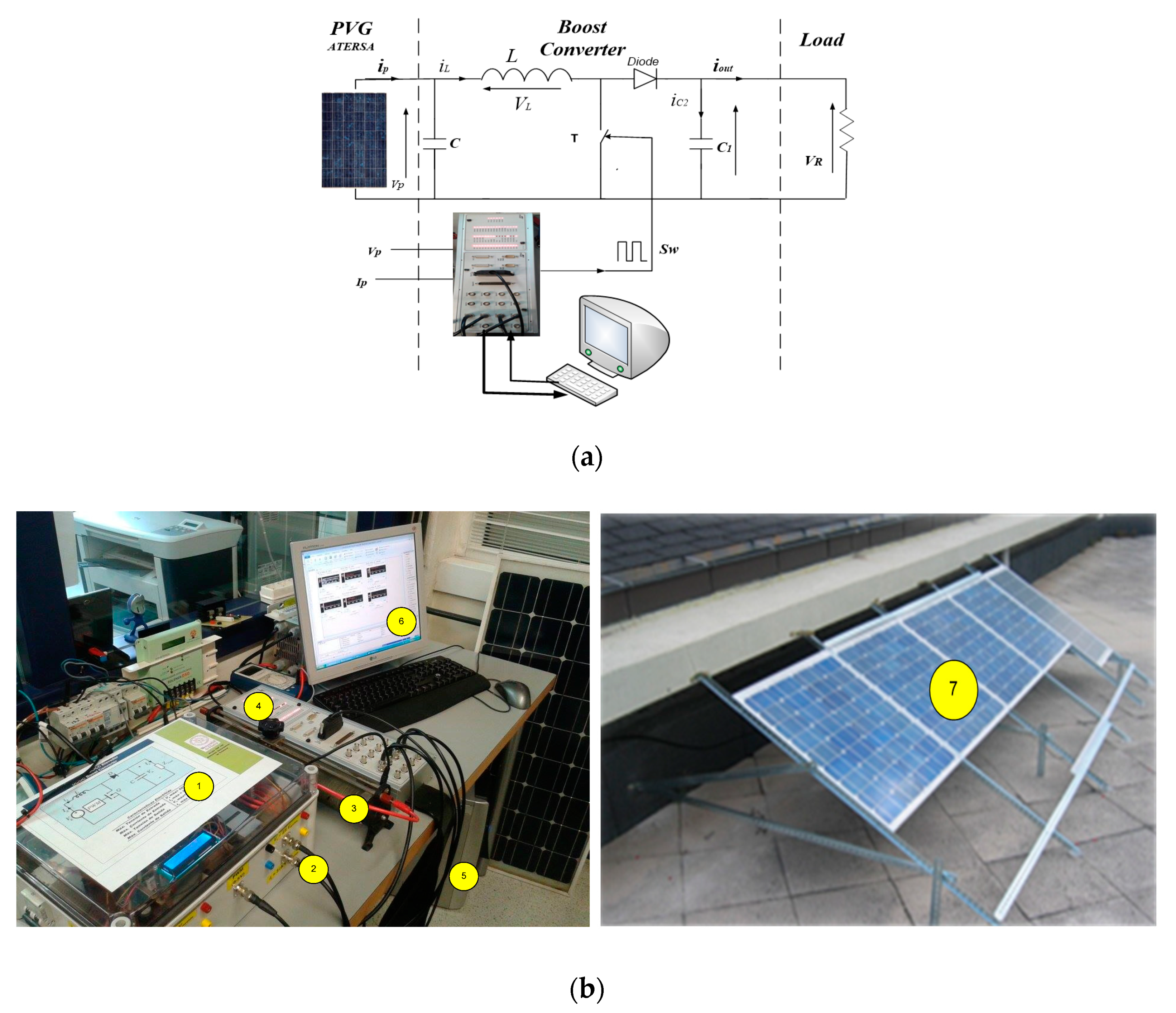

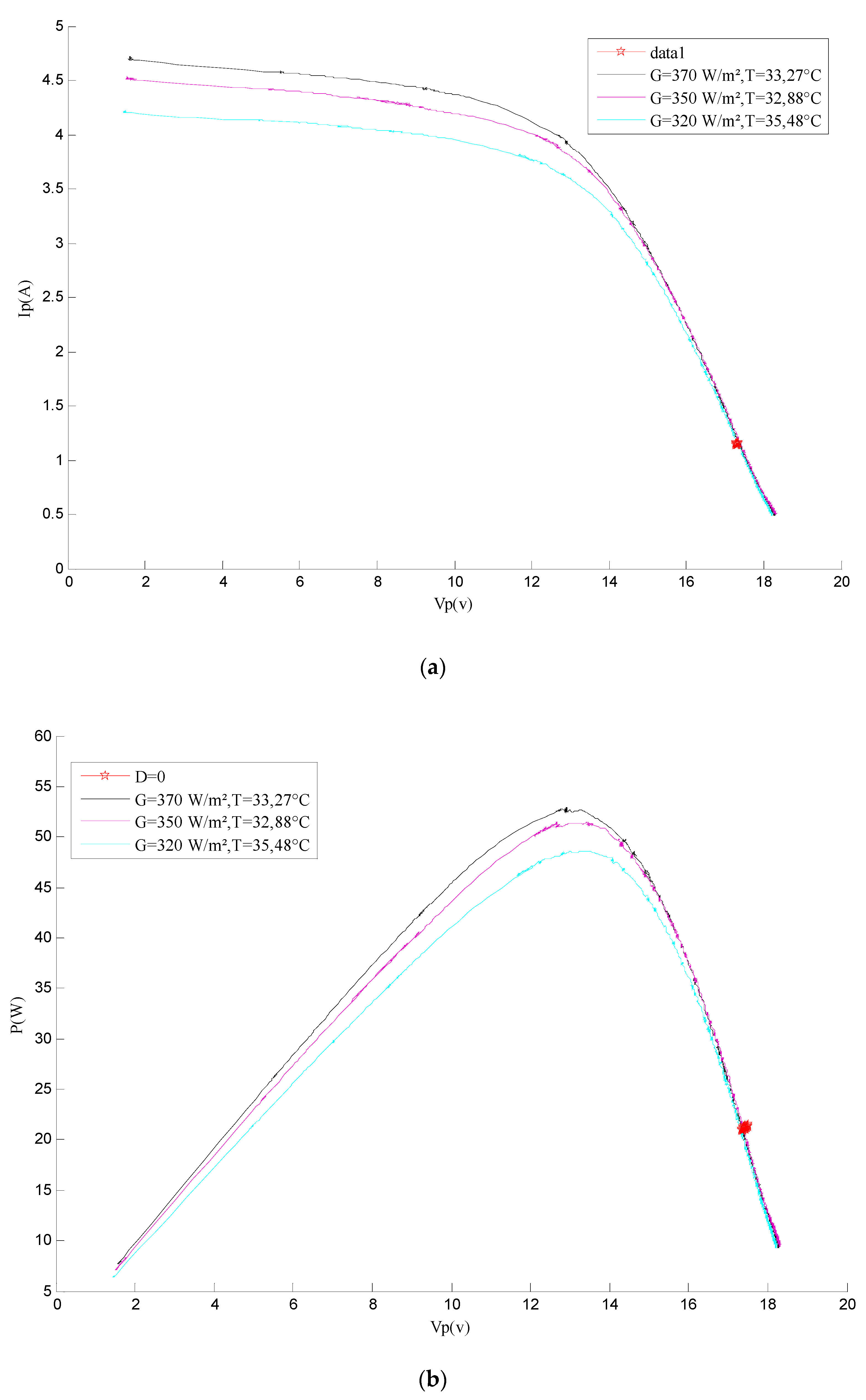
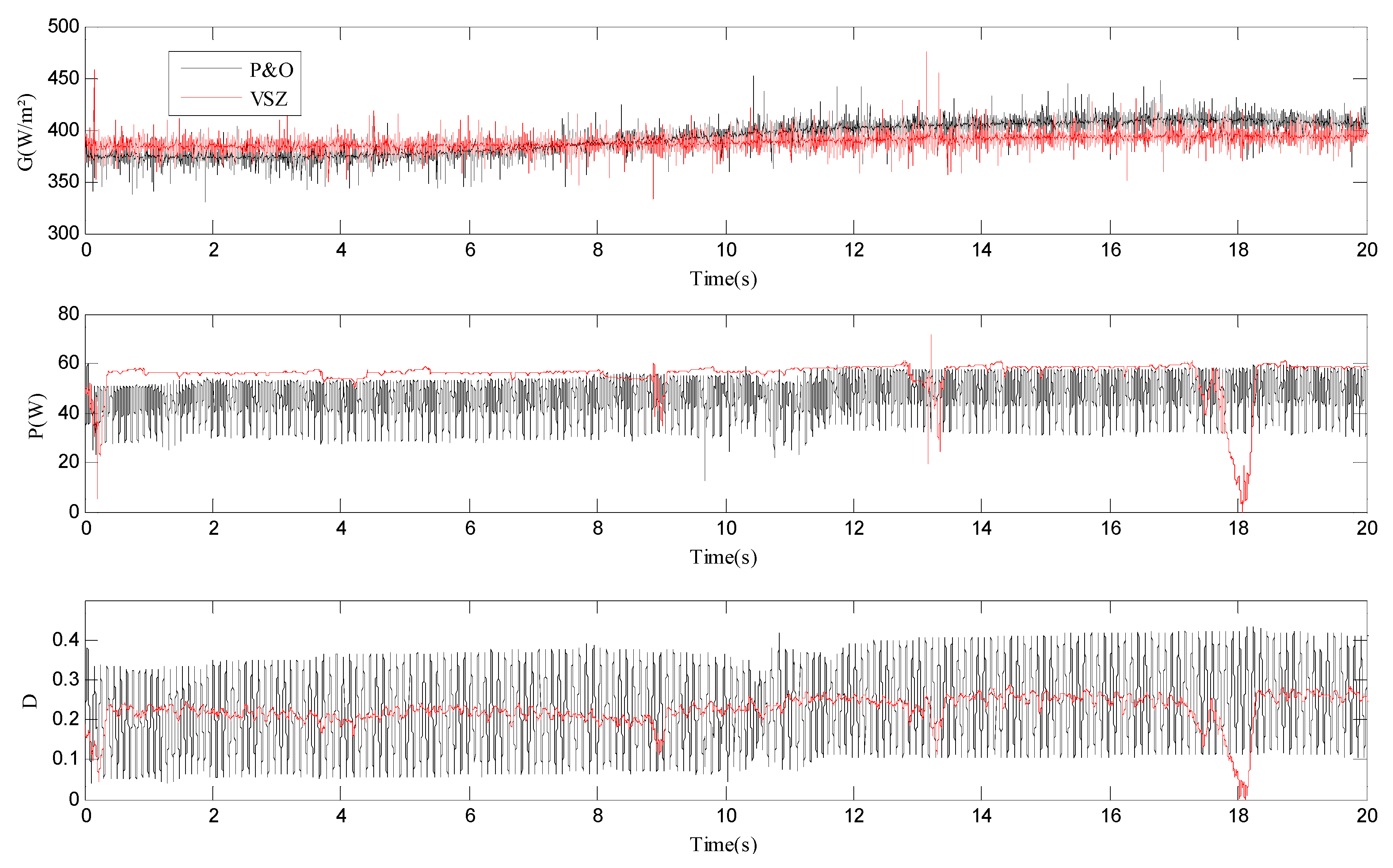
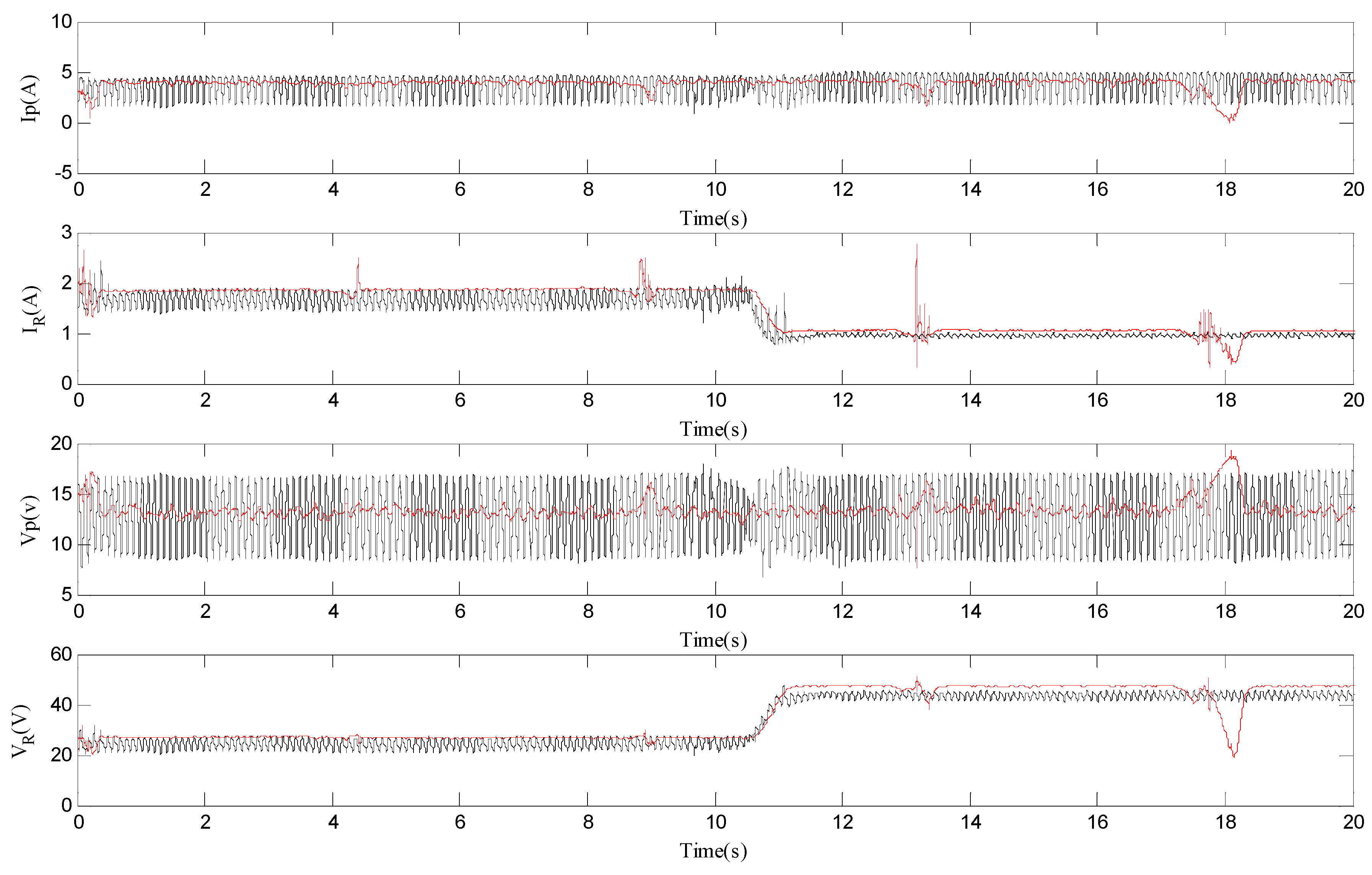
| Cell Type | Monocrystalline |
|---|---|
| Maximum power | 55 (W) |
| Open circuit voltage (Voc) | 20.5 (V) |
| Short circuit current (Isc) | 3.7 (A) |
| MPP voltage (Vmpp) | 16.2 (V) |
| MPP current (Impp) | 3.4 (A) |
| Number of series cells | 36 |
| Schottky Diode | 2× MURF1560GT | 600 V, 15 A, |
| IGBT | 1× HGT40N60B3 | 600 V, 40 A, |
| L | 6× PCV-2-564-08 | 560 µH |
| C2,C1 | 2× TK Series | 1500 µF |
© 2020 by the authors. Licensee MDPI, Basel, Switzerland. This article is an open access article distributed under the terms and conditions of the Creative Commons Attribution (CC BY) license (http://creativecommons.org/licenses/by/4.0/).
Share and Cite
Farhat, M.; Barambones, O.; Sbita, L. A Real-Time Implementation of Novel and Stable Variable Step Size MPPT. Energies 2020, 13, 4668. https://doi.org/10.3390/en13184668
Farhat M, Barambones O, Sbita L. A Real-Time Implementation of Novel and Stable Variable Step Size MPPT. Energies. 2020; 13(18):4668. https://doi.org/10.3390/en13184668
Chicago/Turabian StyleFarhat, Maissa, Oscar Barambones, and Lassaâd Sbita. 2020. "A Real-Time Implementation of Novel and Stable Variable Step Size MPPT" Energies 13, no. 18: 4668. https://doi.org/10.3390/en13184668
APA StyleFarhat, M., Barambones, O., & Sbita, L. (2020). A Real-Time Implementation of Novel and Stable Variable Step Size MPPT. Energies, 13(18), 4668. https://doi.org/10.3390/en13184668







